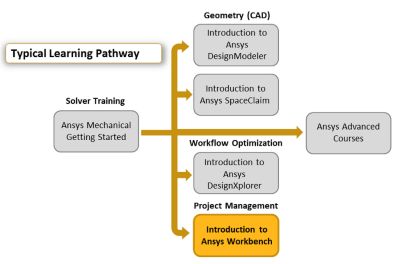Course Overview
This course will be of major benefit to all engineers working with Ansys Workbench in the different physics fields. All the steps required to finish a simulation project are presented. Analysis and component systems are shown with the different connection types available. This course also shows how to work with parameters from a Workbench perspective. Many techniques on documenting a project are shown. The workbench folder and file structure are also covered.
Prerequisites
- No prerequisites are required.
Target Audience
Engineers and Designers tending to use Ansys Workbench with their studies in structural, fluids, electromagnetics and more.
Teaching Method
This is a one module Self-Paced course without workshops.












